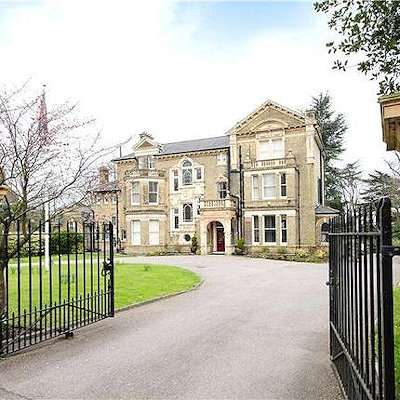
Like us on Facebook
PLACE NAMES


 
|
|
Sydenham
|

|
|
|
Originally known as Shippenham, Sydenham began as a small settlement, a few cottages among the woods, whose inhabitants grazed their animals and collected wood. In the 1640s, springs of water in what is now Wells Park were discovered to have medicinal properties, attracting crowds of people to the area. Sydenham grew rapidly in the 19th century after the introduction of the Croydon Canal in 1809 which linked the Grand Surrey Canal to Croydon and a reservoir was constructed in Sydenham. However, the canal was never successful and closed in 1836 resulting in it being the first canal to be abandoned by an Act of Parliament. The London & Croydon Railway purchased the canal and quickly converted the alignment for a railway from London Bridge to West Croydon, opening in 1839. After the railway opened potential gas companies began to consider the Sydenham area with the Crystal Palace and District Gas Company having works at Bell Green, which continued production until 1969; a retail park now occupies most of the site.
In 1851 the Great Exhibition in Hyde Park was housed in an immense glass building, called the Crystal Palace. In 1854 the building was bought by a private company, dismantled and re-erected in Sydenham Park (now called Crystal Palace Park). Exhibitions, concerts, conferences and sporting events were held at the Crystal Palace (until it burned down in 1936), and Sydenham became a fashionable area; many new houses were built. In 1872, the Children's Hospital, Sydenham opened. It closed in 1991, its services being now part of the University Hospital Lewisham.
In 1860, the Walter Cobb department store at Lawrie Place, Kirkdale (now known as Cobbs Corner) opened, lasting until the 1980s. In 1884, Upper Sydenham railway station opened on the Crystal Palace and South London Junction Railway linking Crystal Palace to London Victoria via Peckham Rye.[5] The station and the line were poorly used despite new houses being built in the area, as passengers preferred to use other stations near-by Sydenham Hill (opening in 1863), Crystal Palace (Lower Level) and Sydenham which were on more direct routes. The ill fate of the Crystal Palace in 1936 saw patronage reduced and the route finally closed in 1954.
Sydenham was attacked by enemies during the Second World War. The gas works were a target, but were never damaged. The railway which ran through Upper Sydenham station was damaged, and some homes in the area were destroyed.
Notable buildings and structures:
- Drinking fountain erected to commemorate the 1897 Diamond Jubilee of Queen Victoria;
- Sydenham is the home of St Bartholomew's church, (1827-1832), at the end of Lawrie Park Avenue, featured in Camille Pissarro's painting of 1871. The building was designed by Lewis Vulliamy;
- Park Court Sydenham, (1936), by Frederick Gibberd, pioneering modernist development of residential flats on the estate on Lawrie Park Road adjacent to the famous Crystal Palace Park;
- Six Pillars, (1934-35), by Berthold Lubetkin, on Crescent Wood Road, a villa strongly in the spirit of Le Corbusier with eponymous six pillars at street level;
- Cobbs Corner, takes its name from a draper’s shop at 291-307 Kirkdale run by Walter Cobb. The shop grew into a large department store catering to the gentry of the area. Interesting imposing dome where you can find the date on the building;
- 180 and 182 Kirkdale, built in the 1850s in Gothic style, with Tudor doorcases;
- 168-178 Kirkdale, three pairs of Italianate houses built around 1862. Number 174 was briefly the home of the conductor August Manns;
- Memorial to Queen Victoria (1897), baroque-style memorial celebrating Queen Victoria's Diamond Jubilee. Restored for Queen Elizabeth II's Silver Jubilee and designed by Alexander Hennell, a Sydenham resident and architect;
- Jews Walk, it is believed that a wealthy Jewish resident planted a row of trees to define the boundary of his walk from the Common. Numbers 2,4 and 6 are classical villas dating from the 1840s. Karl Marx's daughter Eleanor lived on Jews Walk. On 9 September 2008 a blue English Heritage plaque was placed on the house to commemorate this fact;
- Halifax Street, beautifully preserved street with houses dating from the 1840s. Of notice are in particular the closeness of the houses, the length of the street and the size of the gardens;
- The Kirkdale Building, previously the Sydenham Public Lecture Hall, was built in 1861 by Sydenham resident Henry Dawson.
David Bowie spent five years living in Sydenham in his early adult life.
Jason Statham - film actor - also lived here.
|
 Feel free to Email me any additions or corrections Feel free to Email me any additions or corrections
LINKS AVAILABLE TO YOUR SITE
| |





